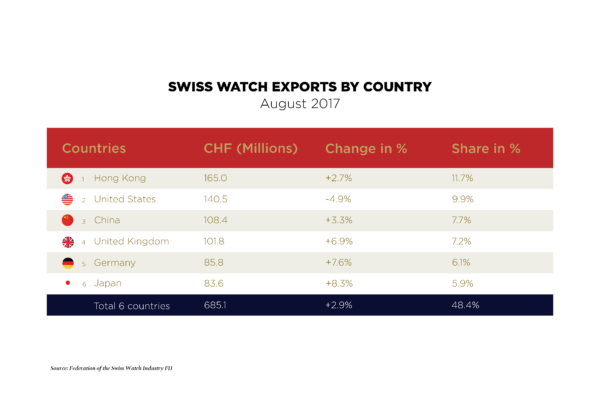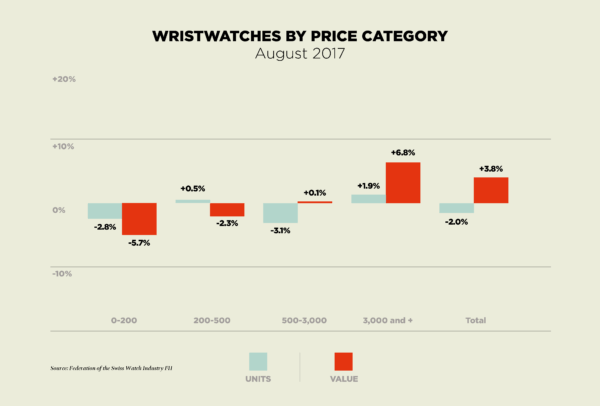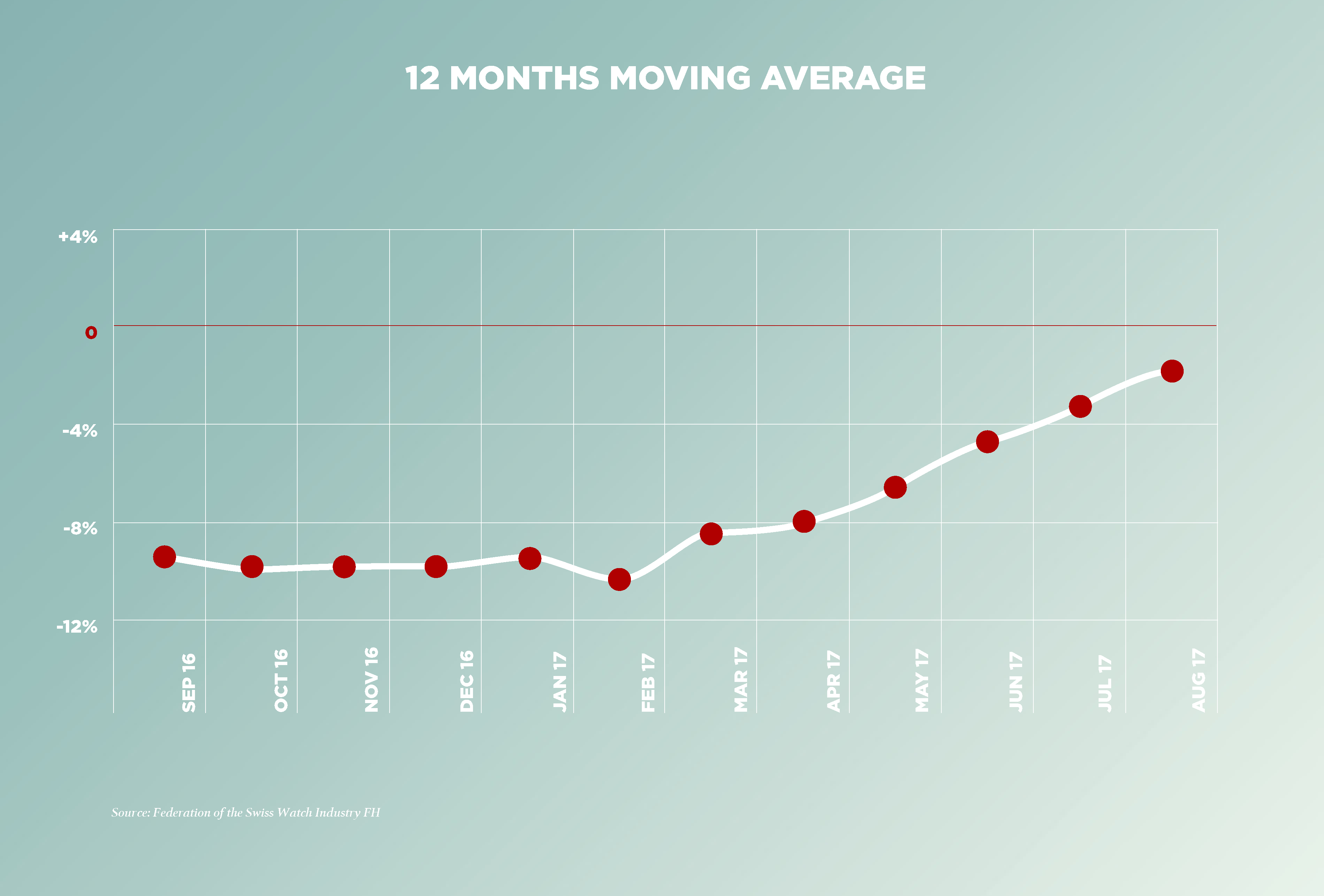A sigh of relief could be heard in the Swiss valleys at the end of this year’s first quarter. Twenty consecutive months of negative growth had left the once invincible watch sector somewhat crestfallen, and so when in March exports finally moved back into positive figures, there was hope that the end of the tunnel had finally arrived. The second quarter went on to confirm this trend, with Swiss watch exports climbing by 3% to CHF 5 billion. August posted a further rise of 4.2%, bringing the increase for the first eight months of the year to 1.2%. One of the most spectacular turnarounds concerns Hong Kong. The industry’s main export market had struggled to stay afloat during 2015 and 2016, whereas the second quarter of this year revealed a positive trend in the region. China, meanwhile, chalked up almost a year of double-digit growth. Once again, the industry can thank high-end mechanical timepieces for this improved performance, while quartz watches continue to lose export market share.
Half the executives questioned for the survey see China as the next big growth market for Swiss watchmaking.
As the Deloitte Swiss Watch Industry Study 2017 reveals, “52% of executives are optimistic about the Swiss watch industry outlook for the next twelve months, compared to 2% in 2016.” Expectations are high for Asia in general and for China in particular (71% of executives), where luxury products sales are forecast to grow between 6% and 8% this year. One of the reasons, notes Deloitte, is the fall in the number of corruption-related prosecutions: “In 2016, for the first time in five years the number of officials handed over to China’s courts decreased, marking a turning point in China’s anti-corruption and anti-bribery campaign.” In addition, Chinese buyers are now more inclined to purchase luxury products on the domestic market, following the rise in import taxes from 30% to 60%, and tougher controls at customs. Half the executives questioned for the survey see China as the next big growth market for Swiss watchmaking.

The digital age
The improved outlook has alleviated concerns over the challenges and risks facing the industry. The executives surveyed quoted weaker foreign demand as the biggest risk (57% versus 79% in 2016), ahead of a strong Swiss franc (48%), weaker domestic demand (39%), revised Swiss-Made legislation (25%) and the competitive threat of smartwatches (23%). The study notes that “although smartwatches recently overtook Swiss wristwatches in terms of total units, the perception of the market seems to remain the same: real benefits of smartwatches beyond fitness and health tracking are still lacking for many consumers. It therefore does not come as a surprise that recent launches and announcements continued to focus on these two aspects.” In other words, consumers still prefer classic watches, as confirmed by the data collected for the survey by Research Now*. Deloitte’s own findings indicate that “millennials are less interested in buying a smartwatch than one might expect. Asked how they would spend a CHF 5,000 gift that had to be spent on a watch, millennials surveyed in China, Italy, the UK and US would choose a luxury mechanical watch over the latest release of a smartwatch, every year, for the next ten years.”

Among the different winning strategies open to the industry, digital has powered ahead. The development of online and digital channels “is now the second priority of watch executives after the introduction of new products.” One option is to develop sales via brands’ own e-boutiques as well as through online authorised dealers. Digital has also penetrated Swiss watchmakers’ marketing strategies, which focus heavily on social media. Its influence on offline shopping is another factor which brands need to take into account. According to Deloitte, they should aim to provide “a single, all-inclusive digital customer journey on any device” that would give potential buyers key information such as in-store availability, product reviews and personalised offers. The initial reluctance to embrace digital appears to be well and truly in the past – a good thing considering that “while a majority of consumers still buy watches in-store, 60% use online and digital channels to research prices or find product information.” And this is just the beginning…
*This sixth Deloitte Swiss Watch Industry Study is based on an online survey, carried out between May and July 2017, of more than 60 watch executives and a consumer survey which was conducted among 4,500 people living in China, Italy, Germany, Japan, Switzerland and the United States by the data collection provider Research Now.














